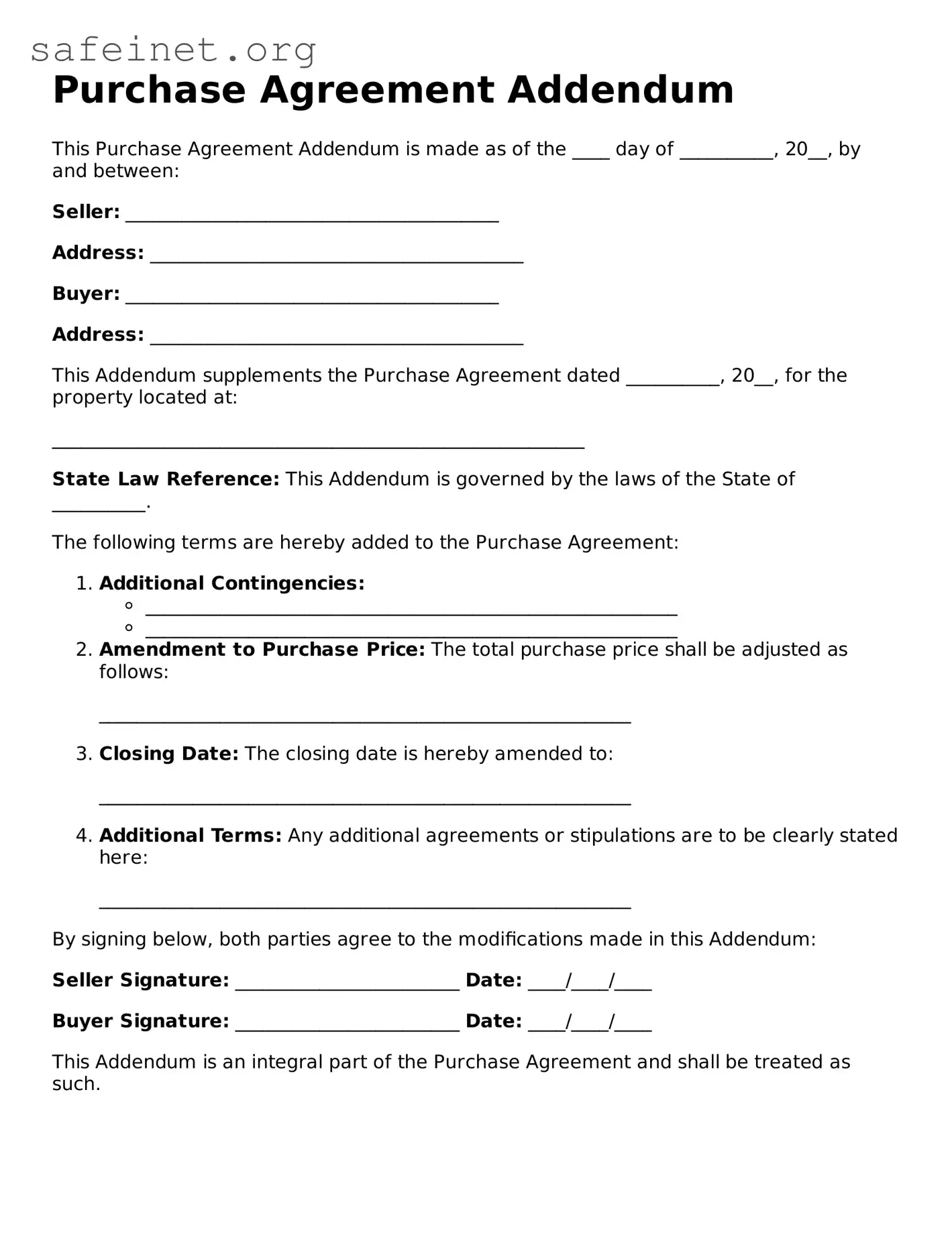Purchase Agreement Addendum
This Purchase Agreement Addendum is made as of the ____ day of __________, 20__, by and between:
Seller: ________________________________________
Address: ________________________________________
Buyer: ________________________________________
Address: ________________________________________
This Addendum supplements the Purchase Agreement dated __________, 20__, for the property located at:
_________________________________________________________
State Law Reference: This Addendum is governed by the laws of the State of __________.
The following terms are hereby added to the Purchase Agreement:
- Additional Contingencies:
- _________________________________________________________
- _________________________________________________________
- Amendment to Purchase Price: The total purchase price shall be adjusted as follows:
_________________________________________________________
- Closing Date: The closing date is hereby amended to:
_________________________________________________________
- Additional Terms: Any additional agreements or stipulations are to be clearly stated here:
_________________________________________________________
By signing below, both parties agree to the modifications made in this Addendum:
Seller Signature: ________________________ Date: ____/____/____
Buyer Signature: ________________________ Date: ____/____/____
This Addendum is an integral part of the Purchase Agreement and shall be treated as such.
